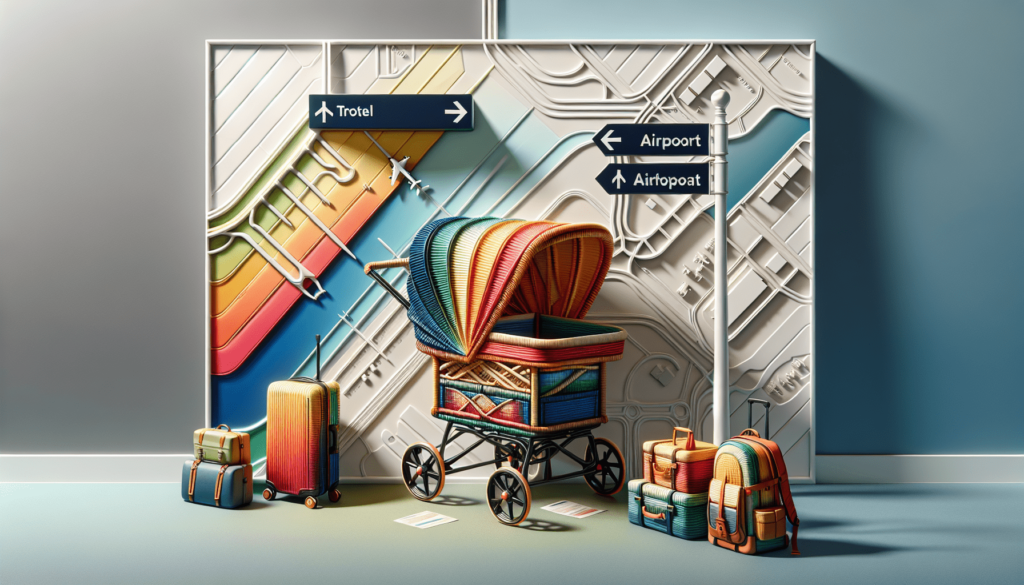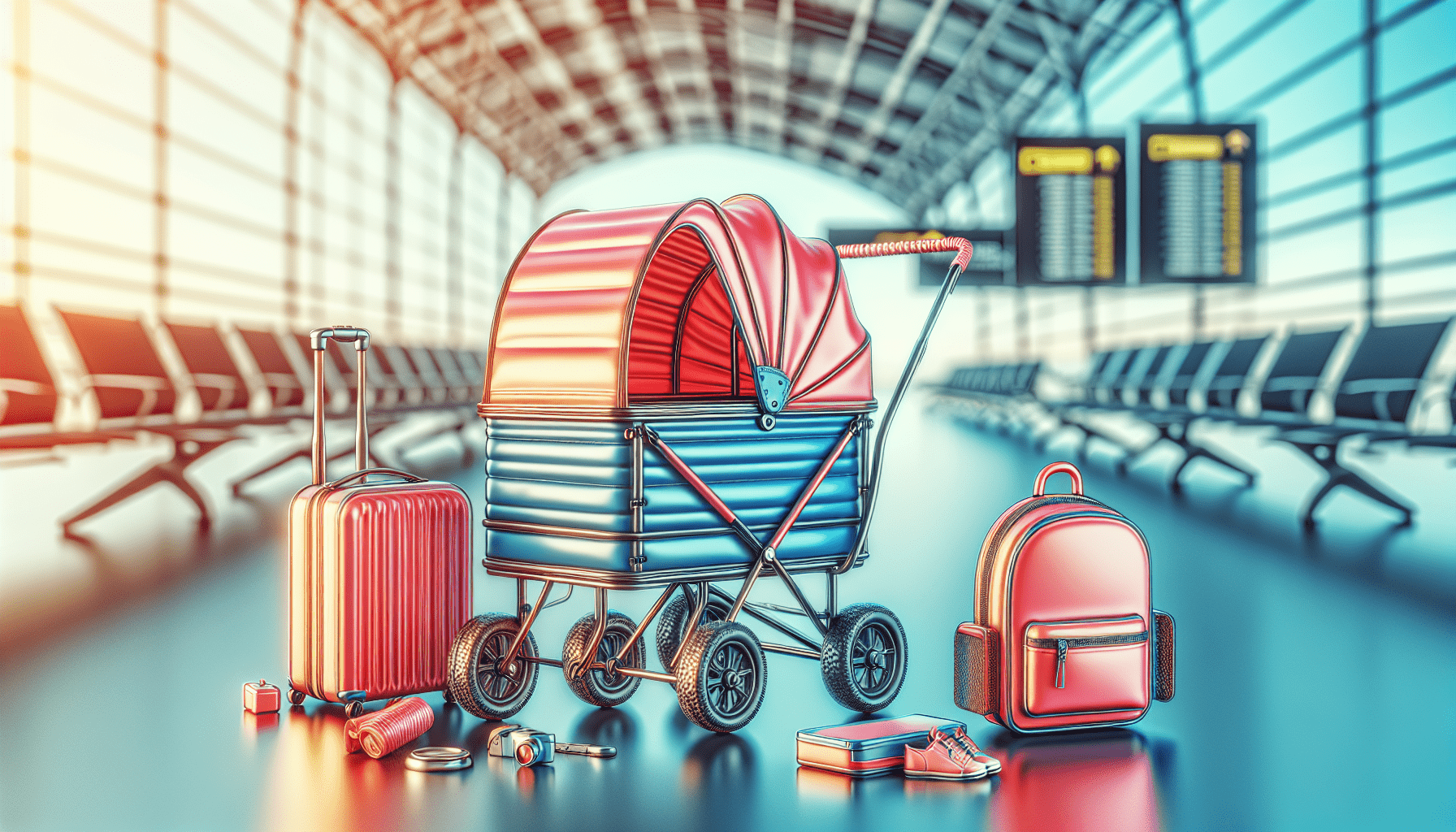Have you ever found yourself wondering about the logistics of traveling with a folding wagon? You might be gearing up for a family trip or perhaps planning a day out at a theme park, and the idea of bringing along a convenient way to transport your gear seems ideal.

Understanding Folding Wagons
Before we jump into the nuances of air travel with a folding wagon, let’s clarify what we mean by a folding wagon. These versatile, lightweight vehicles are typically made from a durable fabric and a collapsible frame, making them easy to transport and store. They’re designed to carry everything from children to beach supplies, helping to reduce fatigue while providing convenience.
Types of Folding Wagons
Folding wagons come in various shapes and sizes, tailored for different purposes. Below is a simple breakdown of the most common types:
| Type | Description |
|---|---|
| Standard Folding Wagon | Basic design, perfect for general use. |
| All-Terrain Wagon | Built with larger wheels for rougher terrains like parks and beaches. |
| Utility Carts | Often features removable sides for flexibility, useful for gardening or shopping. |
| Beach Wagon | Equipped with sand-friendly wheels, helpful for trips to the shore. |
Understanding these different types can help you decide what kind might suit your needs best and how it will fit with your travel plans.
Airline Regulations Overview
Airlines have specific regulations regarding items that passengers are allowed to bring on board. It’s essential to familiarize yourself with these rules before you start packing.
Checked Luggage vs. Carry-On
When considering whether you can bring your folding wagon along for the ride, the first thing to determine is if it can be classified as checked luggage or carry-on.
- Checked luggage is what you check at the gate and retrieve upon landing. This tends to include larger items.
- Carry-on luggage is what you bring into the cabin with you, usually limited to smaller items that fit in overhead compartments or under the seat in front of you.
The status of your folding wagon may depend on its size after being folded, which leads to the next essential point.
Dimensions Matter
Airlines usually have specific measurements for carry-on items. Typically, the maximum dimensions for a carry-on bag range around 22 x 14 x 9 inches, but this can vary between airlines. When folded, will your wagon fit within these limits?
Measuring Your Folding Wagon
To avoid any surprises at the airport, it’s a good idea to measure your folding wagon first. Here’s how:
- Fold the Wagon: Make sure it’s in its closed position to get the actual dimensions.
- Use a Measuring Tape: Measure length, width, and height.
- Compare: Once you have the numbers, compare them to your airline’s policies.
If you discover that your wagon is too large to be classified as carry-on, don’t fret; there may still be options available.

Airline Policies on Folding Wagons
Pet Policies
Some airlines allow folding wagons as part of their pet policies. If your wagon is used for transporting your pet, it’s crucial to check the specific requirements and guidelines of the airline. A few airlines may allow foldable wagons specifically for pets if they meet the necessary regulations.
Baby Equipment Stipulations
Most airlines offer leniency for baby-related gear. If your folding wagon is designated for carrying a child, there may be opportunities to check it for free or bring it on board as part of your carry-on allowance.
- Tips for Parents: Inform your airline during reservation to ensure a smooth experience at check-in.
Preparing For Travel
Packing Strategically
If your folding wagon is coming along, strategic packing is key. Here are a few practical suggestions:
- Use the Space Wisely: Fill the wagon with soft items like clothes or blankets to maximize space, if you are checking it.
- Keep Essentials Accessible: If you are using it as a carry-on, remember to keep your essential items like travel documents and medications at the top.
Additional Gear
Besides your wagon, consider other tools or gear you might need for easy travel. For instance, a lightweight travel stroller could be a suitable alternative that complies easily with airport regulations.
Checking In
As your travel day approaches, you’ll want to prepare for the airport experience.
Arrival Time
Arriving early gives you ample time to check in, get through security, and address any potential concerns about your folding wagon. Give yourself an extra thirty minutes if you’re traveling with a large or unconventional item.
Security Checkpoints
At security, you’ll need to present your wagon just like any other piece of luggage. Depending on the design and materials, a folding wagon could require additional scrutiny, so be ready to unfold it if asked.
Alternative Travel Options
If traveling with a folding wagon seems more trouble than it’s worth, consider other transportation options available at your destination.
Rent a Wagon
Some tourist spots, especially those geared toward families, may offer rental wagons. This can save you the hassle of checking it in and help avoid additional fees.
Local Rentals
If you’re at a theme park or beach, many locations provide rental services for wagons. It may be worth investigating further based on where you’re headed.
What to Do if Things Go Wrong
Delays or Damage
Though often the best-laid plans are subject to changes, knowing how to react in case something doesn’t go according to the original idea can make a world of difference.
Reporting Damage
Should your wagon suffer damage during travel, promptly report it at the baggage claim. Provide them with as many details as possible, including your flight information, and if applicable, pictures of the wagon prior to checking.
Lost Luggage
If your wagon becomes lost, file a report immediately. Most airlines have a protocol for handling lost luggage, and they should provide you with information on the next steps.
After the Trip: Caring for Your Wagon
Once you return home, taking care of your wagon can enhance its longevity.
Cleaning
Regular cleanings after a trip can help maintain its condition and avoid unpleasant odors. Use mild detergent and water to wipe down surfaces, but avoid harsh chemicals which may damage the fabric.
Storage Tips
When not in use, store your folding wagon in a dry place, out of direct sunlight to prevent fading and wear.
Conclusion: Your Travel Companion Awaits
In summary, taking a folding wagon on an airplane can be a possibility, provided you understand the airline’s policies. By measuring your wagon, knowing the regulations, and preparing properly, you can enjoy the benefits a folding wagon brings during your travels.
From easing transporting gear to creating a comfortable space for kids, wagons can make your trip smoother. Remember, every airline has its distinct set of rules, so always review their guidelines ahead of your travel day. Whether you take your wagon or choose another option, happy travels await you!

